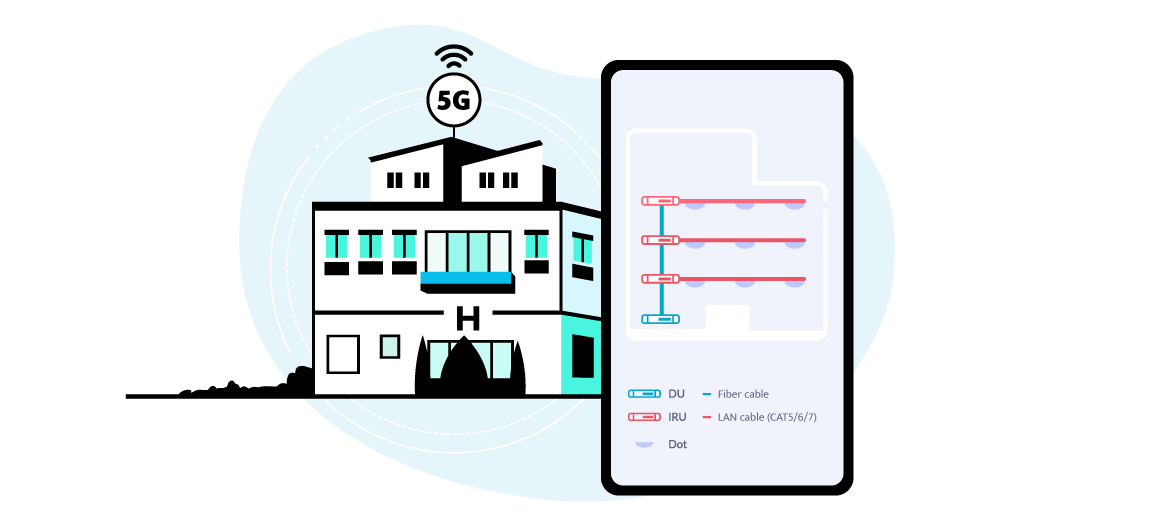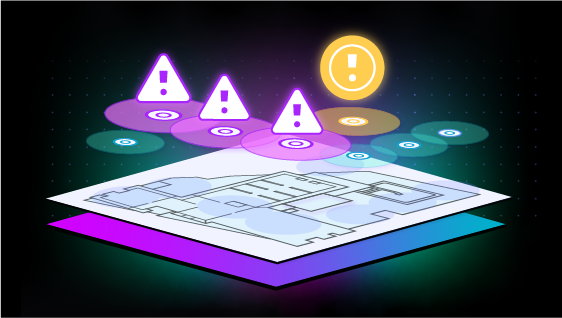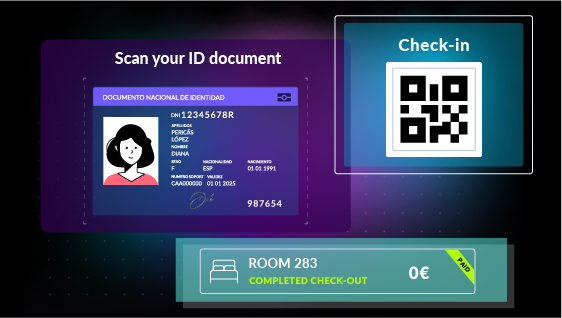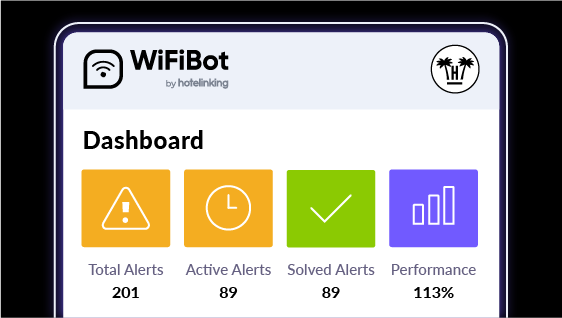
Types of 5G systems that can be installed in a hotel.
Preparing a property for the arrival of 5G will require heavy investment and its implementation is only in the embryonic phase.
Hence the importance of auditing the systems to pave the way for their possible integration. Other technologies such as WiFi 6 will make more sense and be more affordable in the short term.
It is expected that with 5G indoors coverage will be much lower than outdoors, because many networks will work in the middle band, between 3.5 and 4.5 GHz, which penetrates much less than in the band around 700 MHz, now used in 3G and 4G. In the initial deployments made in the United States with millimetric waves, indoor coverage has been practically zero.
Due to this poor 5G coverage inside buildings, wireless networks are expected to grow massively in the coming years for homes and business telecommunications systems. But there is also the micro antennas inside buildings resource, especially in places that tend to be crowded. There are already several devices to extend the use of 5G indoors and it is safe to say that in the coming years there will be many more and at a relatively low cost.
WiFi 6, the latest in WiFi wireless technology, is expected to be even more successful and more widely used than its previous versions, once the regulations governing it are fully approved and multiple products by different manufacturers are found in stores.
Although the issue is being discussed, most experts agree that 5G and WiFi 6 will grow and coexist over the next decade and both technologies will be very complementary, each with a fairly defined use, but with a certain overlap between them in several applications.
4 types of systems can be implemented in a hotel
OPTION 1: 5G AND WIFI 6, COMPLEMENTARY
For Chuck Robbins, CEO at Cisco, “WiFi 6 and 5G are made to work together,” a widely shared view. Work is underway so that WiFi 6 signals can be connected to radio access networks (RAN) and easily integrated into the 5G core, thanks to the 5G architecture separating the core of the network and the access networks.
Jeff Lipton, head of corporate development at Aruba, an HP subsidiary specialising in networks, also believes that 5G and WiFi 6 can and should be complementary. From a performance point of view, 5G and WiFi 6 are very similar in terms of capacity, latency, reliability or connection density.
Their essential difference is that 5G is very suitable for covering a very wide area, with many high-speed connections, usually outdoors, while WiFi 6 works very well in business environments, inside offices, buildings or homes.
The problem with using 5G inside offices is that all devices should be changed to incorporate access points, in addition to putting micro antennas and distributed antennas (DAS) inside, because 5G signals do not easily penetrate indoors. 5G devices are also much more expensive than WiFi access devices and routers, and if that were not enough, 5G networks use payable bands, while the band used by WiFi is free.
Functionally, a company could have all its mobile networks based on 4G and 5G, but economically it doesn’t make much sense because it would be much more expensive to install. The usual thing, experts say, is that 5G networks are used outdoors and indoors, WiFi networks for their internal communications, as well as wired networks and 4G and 5G networks if there is coverage from the outside.
According to Lipton, it is not a question of whether WiFi 6 or 5G will win because both technologies have their own field of application, the first indoors and the second outdoors, and are complementary. Both have a very promising market, evolving the installation of different WiFi towards WiFi 6 and those of 3G and 4G towards 5G.
Eventually, WiFi 6 and 5G networks will converge on the 5G backbone network through the radio access network. And many large companies will have their own private mobile network with dedicated spectrum, to which the different mobile technologies will be integrated.
OPTION 2: WAN WITH 5G
WAN stands for Wide Area Network. The concept is used to name the computer network that extends over a large strip of territory, whether through a city, a country or even globally. An example of a WAN network is the internet itself.
WAN is distinguished from other types of networks, such as LAN (Local Area Networks) or PAN (Personal Area Networks), which have other configurations and ranges. LAN networks are very popular within companies or organisations, while PANs operate inside smaller spaces such as meeting rooms or so.
Therefore, the WAN network involves the interconnection of terminal equipment or other networks that are at great distances from each other.
This combination will make sense in rural or remote areas where broadband connectivity has been discarded due to its cost-effectiveness.
Fixed wireless access (FWA) enables network operators to deliver ultra-high-speed broadband to suburban and rural areas, supporting home and commercial applications where fibre is prohibitively expensive to install and maintain.
The cost and complexity of fixed broadband delivery have continually challenged high-speed data services’ implementation. While technologies such as WiMAX have tried to avoid the local loop or avoid the fibre hurdle, these initiatives largely failed, primarily because they required an entirely new overlay infrastructure and expensive proprietary equipment. In contrast, 5G fixed wireless access (FWA) uses standardised 3GPP architectures and common mobile components to deliver ultra-high-speed broadband services to residential subscribers and business clients.
With the new radio (NR) on the millimetric wavelength (mmWave), 5G FWA can provide a competitive alternative to fixed-line DSL, cable and fibre in all markets. This provides the means by which suburban and rural consumers can receive the bandwidth required to support high-definition streaming services and high-speed Internet access.
OPTION 3: ALL 5G
In this case we want the entire property to have 100 % 5G coverage.
Currently, this type of system is very expensive since we need to install antennas practically anywhere in the hotel where we want coverage including the different rooms, bedrooms and bathrooms. All wired.
In addition, we need to know who will be able to provide us with this type of connection.
OPTION 4: A SOLE 5G POINT
In this case we can use our current internet system, but we want to have an area of the hotel with good 5G coverage, an easy example is to cover the part destined to hold conventions or congresses or even the ground floor of the hotel where there are public areas.
This case is expected to make more sense in the short term and at a much cheaper investment level than full coverage.
In future articles we will show several scenarios where each of these systems can be viewed graphically and what each of them entails.








